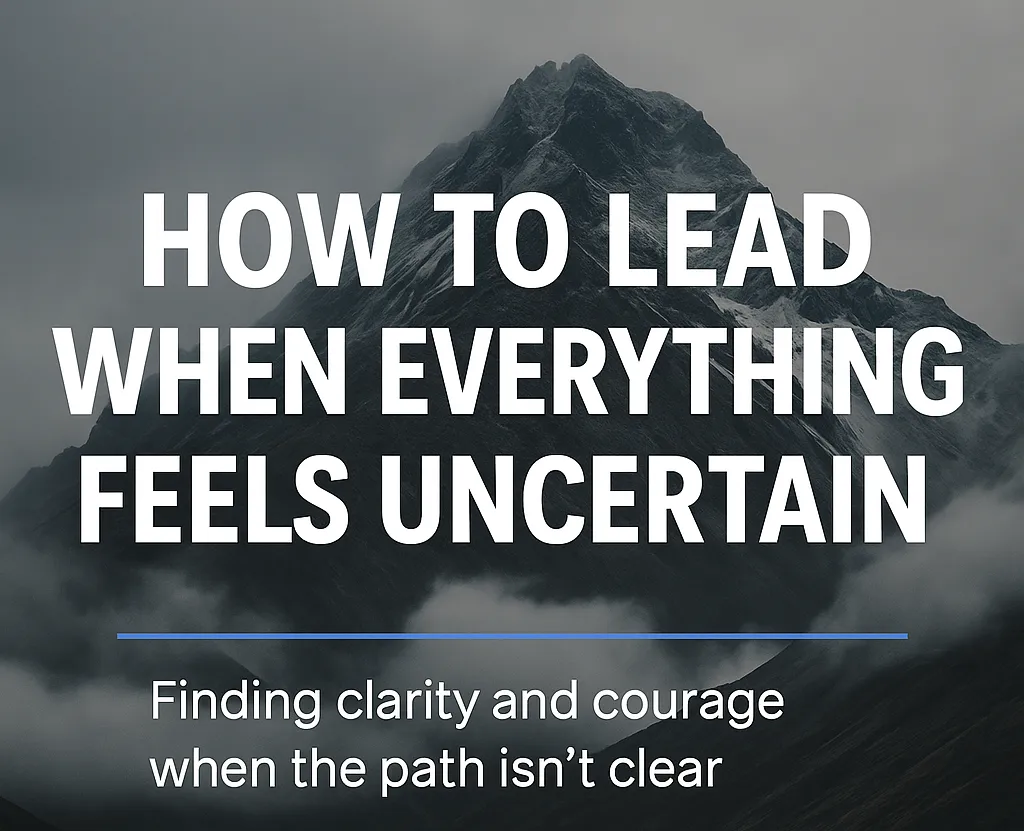
The Calm Leader
There’s a moment every leader reaches where the noise becomes too much.
The messages keep coming in. Deadlines tighten; the team looks to you for direction while you’re still trying to make sense of what’s changing. You start to feel that familiar pressure, the sense that if you stop moving, even for a second, everything might collapse.
I’ve been there more times than I can count.
In my early days leading teams, I used to think good leadership meant being the first to react. Quick answers. Fast decisions. Always available. I believed that constant motion meant progress.
What I’ve learned over years of coaching executives and working with business owners across industries is this: speed without clarity eventually burns you out.
Today, the most effective leaders aren’t the loudest in the room. They’re the calmest.
When the noise never stops
We live in a world that demands urgency. Everything feels like it needs to happen now, every client request, every project, every opportunity. And because of that, leaders are constantly shifting between putting out fires and trying to keep the bigger vision alive.
The truth is that this kind of constant urgency doesn’t build momentum; it drains it. It creates a culture where teams are reacting to everything and reflecting on nothing.
Calm isn’t the absence of action. It’s the ability to act with intention.
The leaders who thrive today are those who slow the moment down just long enough to see it clearly before they move. They know that one clear decision is worth more than ten rushed ones.
The discipline of calm
When I talk about calm leadership, some people think I mean being quiet or laid back. Not at all. Calm is an inner discipline. Its strength is under control.
Calm leaders don’t avoid pressure; they master it. They walk into high-stakes conversations with their presence intact. They listen when others rush to speak. They measure their words. They take the emotional temperature of the room before they lead, and because of that, their people feel safe.
Think about it, if your team sees you lose control, they lose confidence. But when you stay centred, they find theirs.
Three ways to lead with calm and conviction
Over time, I’ve come to see that calm leadership isn’t luck or personality. It’s something you can practice and strengthen, just like any other leadership skill.
Here are three ways to start.
First, clear your mental altitude.
Most leaders operate so close to the ground that they only see the immediate problems in front of them. Step back. Zoom out. Ask yourself: What’s really happening here? How does this connect to our bigger picture? Am I reacting or am I responding?
When you do this often enough, you start leading from perspective instead of pressure.
Second, manage your emotional energy.
Leadership is emotional labour. The state you walk into the room with becomes the state your team walks out with. Take a moment before each meeting to centre yourself. Breathe. Let go of whatever frustration you carried from the last conversation. The ability to regulate your own emotions under pressure is what sets calm leaders apart.
Third, lead with intent, not impulse.
Every day brings a hundred small decisions. The calm leader doesn’t try to control them all; they focus on what really matters now.
Each week, write down three things: what you must do, what you should delegate, and what you can let go of. You’ll be surprised how much clarity comes from that simple ritual.
Turning calm into culture
Here’s the beautiful part. When a leader consistently practices calmness, it spreads.
I once worked with a family business where every meeting would end in conflict. There was passion but no pause. People talked over one another, decisions were made emotionally, and no one left the room feeling heard.
We didn’t start with a strategy session. We started with rhythm.
We introduced a new cadence: check-in, discuss, reflect. The first ten minutes of every meeting were simply about alignment, not numbers, not issues, just presence. Within a few months, tension turned into trust. The business began to grow again because communication became clean and intentional.
Calm isn’t just a leadership style; it’s a cultural advantage. It shapes how teams think, how they treat one another, and how they recover from setbacks.
The calm reset
If you’re reading this and feel like your leadership energy has been pulled in too many directions, try this short reset.
Step away from your screen.
Take one slow breath in and one longer breath out.
Ask yourself: What’s the real decision that needs my attention today?
Then act on that and only that with full focus.
Leadership isn’t about controlling everything. It’s about managing your own presence so that others can find theirs.
The world doesn’t need faster leaders. It needs steadier ones. When you lead with calm, people stop reacting and start trusting. They see that consistency, and they anchor to it.
So, this week, I want to challenge you: Before you rush into your next meeting or decision, take a breath. Slow the moment down. Step into it with calm conviction.
Calm isn’t a weakness. It’s power mastered. Lead with calm. Act with conviction. Build with clarity.
As always, lead with fire, live without regret, and do # WHATEVERITTAKES
